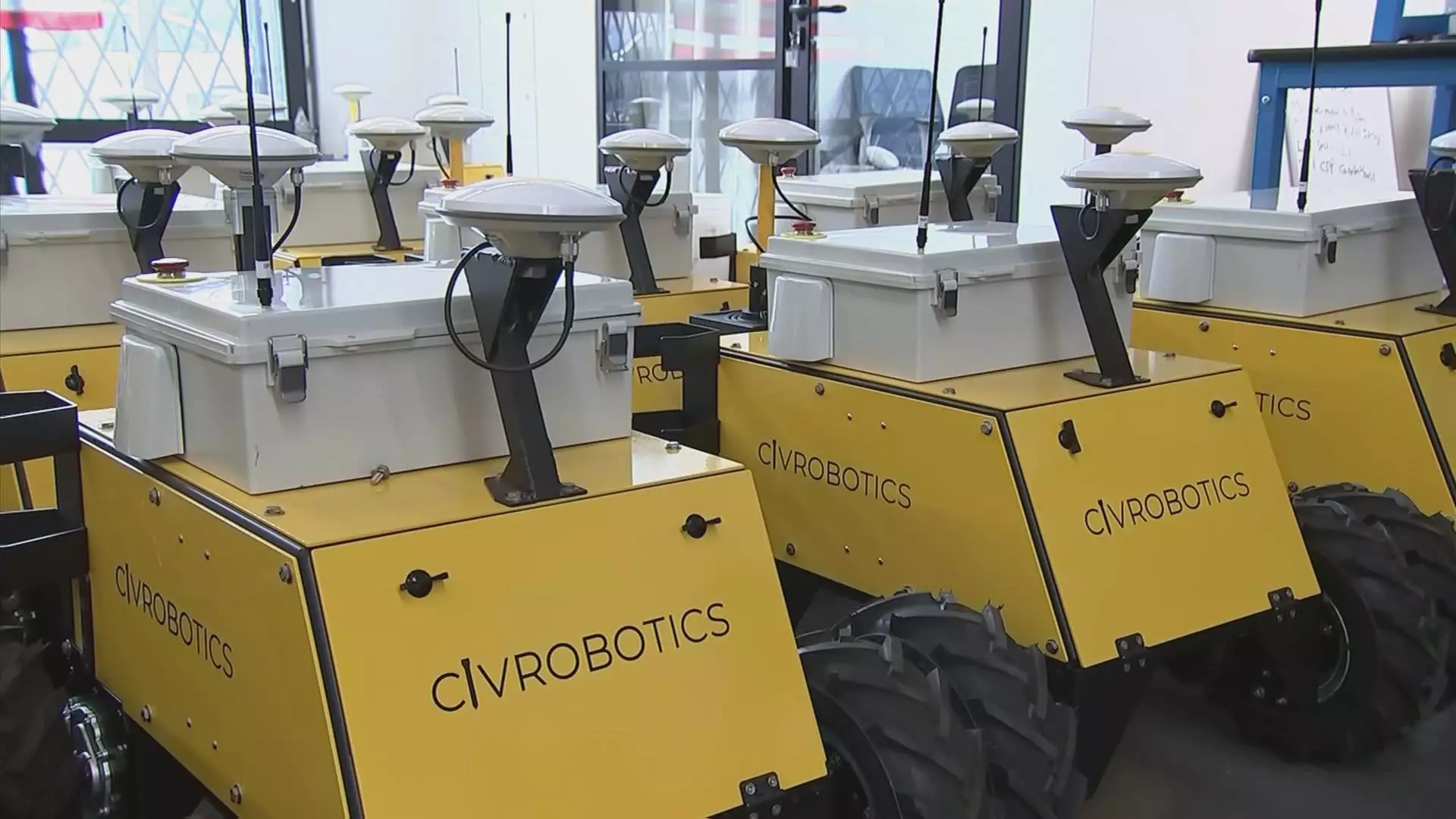Amidst a backdrop of waning government support, the private sector’s resilience in renewable energy development is nothing short of remarkable. While policymakers have scaled back subsidies and initiated skepticism, the industry refuses to stagnate. Instead, it advances through technological innovation that promises to redefine how we build our future energy infrastructure. Central to this transformation are cutting-edge robotic solutions that not only accelerate project timelines but also slash costs—a critical advantage in an era where political rhetoric often emphasizes fiscal austerity.
The deployment of autonomous machinery like CivDot exemplifies this shift. It embodies the belief that social and governmental hurdles are best overcome through technological ingenuity. By automating the most labor-intensive aspects of project planning, these robots ensure that private investments remain profitable and compelling. This isn’t just about technological novelty; it’s about practical resilience. In a political landscape rife with uncertainty, industries that leverage robotics and automation will shape the future landscape of energy development, compelling policymakers and critics alike to reconsider the true costs of stagnation.
Technological Breakthroughs: Making the Impossible Possible
CivDot and similar robots have demonstrated that innovation can transcend the limitations posed by rugged terrain and unpredictable weather conditions—obstacles that traditionally hampered manual labor and slowed project deployment. These machines are equipped with sophisticated navigation and geospatial intelligence capable of marking thousands of layout points daily with nanometer-level precision. This accuracy—less than 8 millimeters—outperforms human surveyors, especially when working in harsh environments like deserts and muddy fields, which are commonplace in renewable energy expansion.
Beyond mere speed, these robots introduce a paradigm of cost-effectiveness and safety. The financial savings, stemming from reduced labor hours and minimized human risk in hazardous environments, are significant. Instead of deploying multiple survey crews with expensive equipment, a single robot equipped with advanced sensors can deliver the same, if not better, results. Private companies are leveraging this technology not out of trendiness but out of necessity—optimizing resource allocation in a climate where every dollar counts.
In addition, the adaptability of CivDot goes beyond renewables. Its application in oil and gas projects underscores its versatility, facilitating a transition away from fossil fuels without sacrificing efficiency. Such innovations reveal a strategic advantage for the private sector—gaining independence from government subsidies while simultaneously commodifying technology that can be sold across multiple sectors. This self-reliance cultivates a robust market that doesn’t depend on fickle political winds, reinforcing the importance of technological sovereignty in energy development.
The Political Ambiguity and the Private Sector’s Strategic Response
In an environment fraught with policy ambivalence—where governments oscillate between promoting green initiatives and adopting austerity measures—the private sector’s agility becomes essential. Investing in robotics is, at its core, a political statement: emphasizing efficiency and innovation over reliance on government handouts. It sends a clear message that renewable energy projects can thrive despite decreased political support, provided they innovate and adapt.
Backing from venture capital firms and strategic industry players signals confidence that these technological solutions are more than mere cost-cutting tools—they are strategic assets in a competitive energy market. With over $12 million invested, the industry is betting on an autonomous future where labor-intensive tasks are streamlined, and project timelines are compressed. These investments are not just about profitability; they are about resilience and independence in a climate of policy volatility.
Furthermore, this technological shift could serve as a geopolitical advantage. Countries and companies that master such innovations will be less tethered to government incentives, giving them an edge in the ongoing struggle for energy dominance. It’s a reminder that in a future dominated by smart technology, bureaucratic support is helpful but ultimately secondary to strategic technological leadership.
The Future of Energy Development: Autonomy and Competition
As industry competitors focus on highway and sports field automation, the renewable energy sector’s adoption of specialized robotics highlights the importance of terrain-appropriate solutions. Civ Robotics’ ability to operate on rugged, uneven surfaces illustrates a strategic differentiation—competitors are yet to develop machines capable of handling the complexities of solar farm construction on diverse terrains.
This specialized focus reinforces a broader lesson: innovation tailored to industry-specific problems yields not only operational advantages but also competitive superiority. It is a reminder that industries should not blindly follow the generic solutions but develop and deploy technology that directly addresses their unique challenges. In the long run, this could pioneer a new era where renewable energy projects rely heavily on autonomous systems optimized for each environment, further reducing costs and increasing project success rates.
In essence, the private sector’s push into robotics marks a shift toward strategic self-sufficiency, enabling renewable energy projects to endure political and economic turbulence. This technological edge fosters a resilient energy infrastructure that prioritizes efficiency, safety, and independence—values that are crucial as the world grapples with geopolitical and environmental upheavals. In a time where political promises are unreliable and funding elusive, adopting autonomous construction solutions is not just a smart move—it’s a necessary one.

